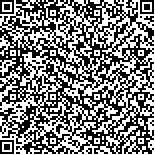| 本文已被:浏览 792次 下载 1052次 |

码上扫一扫! |
|
|
| 回顾与展望:关于有害藻华种类休眠体通过船舶压舱水底泥地理扩散的研究 |
|
胡章喜1,2,3, 尚丽霞1,2,3, 邓蕴彦1,2,3, 唐赢中1,2,3
|
|
1.中国科学院海洋生态与环境科学重点实验室, 山东 青岛 266071;2.青岛海洋科学与技术试点国家实验室 海洋生态与环境科学功能实验室, 山东 青岛 266237;3.中国科学院海洋大科学研究中心, 山东 青岛 266071
|
|
| 摘要: |
| 船舶压舱水可引起外来生物入侵,国际海事组织(International Maritime Organization,IMO)因此制定了具有约束力的压舱水公约,已于2019年1月对我国正式生效。大量研究证明船舶压舱泥是有害藻华种类特别是有害甲藻孢囊的携带者。另一方面,有害藻华在我国近三十年频发,尤其是新的种类不断出现。因此,这种态势是否与压舱泥带来的外来种入侵有关是一个具有重要科学和现实意义的问题。我们最近的工作表明,此前国内外通过形态学方法对压舱泥的检测都大大地低估了甲藻孢囊的种类多样性和样品间种类组成的异质性。因此,必须通过更深入全面的实证研究对外源有害藻华甲藻通过压舱泥入侵我国海域进行风险评估。本文从如下几个方面进行了综述与讨论:(1)船舶压舱水(泥)与有害藻华地理扩散;(2)国内外有关压舱泥中甲藻孢囊多样性的检测与溯源研究;(3)我们对美国港口船舶压舱泥的检测发现压舱泥中甲藻孢囊具有很高的种类多样性和样品间的异质性。最后从我们最近的工作及与文献报道的工作比较获得了几个重要的科学问题。在评述国内外研究成果和前期研究结果基础上,提出有必要通过更大量、广泛的国际船舶压舱泥和中国全海域沉积物取样、高通量测序的分子鉴定与形态观察、单孢囊分子-形态鉴定、孢囊萌发、全面生信分析相结合的技术路线,实证性地评估有害藻华种类通过压舱泥入侵中国的风险,并以此建立对新出现藻华种类溯源或判断是否外来种入侵的基本依据,同时为海关职能部门的检验执法提供依据。 |
| 关键词: 有害藻华 压舱水 压舱泥 休眠孢囊 地理扩散 |
| DOI:10.11759/hykx20190913001 |
| 分类号:Q948 |
| 基金项目:国家自然科学基金(41976134,61533011,41776125);鳌山科技创新计划项目(2016ASKJ02);青岛海洋科学与技术试点国家实验室海洋生态与环境科学功能实验室青年人才培育项目(LMEES-YTSP-2018-01-04);山东省支持青岛海洋科学与技术试点国家实验室重大科技专项(2018SDKJ0504-2) |
|
| Retrospect and prospect: studies on geographical expansion of resting cysts of non-indigenous harmful algal bloom (HAB)-forming dinoflagellates via ships' ballast tanks |
|
HU Zhang-xi1,2,3, SHANG Li-xia1,2,3, DENG Yun-yan1,2,3, TANG Ying-zhong1,2,3
|
|
1.CAS Key Laboratory of Marine Ecology and Environmental Sciences, Institute of Oceanology, Chinese Academy of Sciences, Qingdao 266071, China;2.Laboratory for Marine Ecology and Environmental Science, Pilot National Laboratory for Marine Science and Technology(Qingdao), Qingdao 266237, China;3.Center for Ocean Mega-Science, Chinese Academy of Sciences, Qingdao 266071, China
|
| Abstract: |
| Ships' ballast tanks have long been known as vectors for the introduction of toxic or harmful algal bloom (HAB)-forming species, especially, dinoflagellates. This has led to the International Maritime Organization's (IMO's) mandatory International Convention for the Control and Management of Ship's Ballast Water and Sediment, which China has officially declared to comply since January 22, 2019. Numerous investigations have demonstrated that ballast tank sediments may contain many species and a great number of HAB-forming dinoflagellate resting cysts that may establish themselves as invasive species in destination water bodies. China has observed an apparent increase in the outbreak intensity and frequency of HABs during the last three decades and an increase in the discovery of new HABs species, which invokes a widespread concern of scientific and realistic importance:were some of those newly observed HAB species alien species that invaded China recently? Our recent work on ballast tank sediment samples taken from the ports of the USA and China explicitly demonstrated that all previous reported detections have significantly underestimated the species diversity of dinoflagellate cysts possibly carried in ballast tank sediments and the heterogeneity in species composition among samples from different sources. Therefore, it is an urgent necessity to execute a more comprehensive assessment of the potential risk of HAB species invasion via ballast tank sediments on the basis of comprehensive and intensive experimental investigation. We reviewed the progress of the invasion risk of non-indigenous HAB-forming dinoflagellates via ships' tank sediments from the following aspects:1) Ship's ballast water (sediment) and geographical expansion of HABs; 2) Resting cyst diversity in ship's ballast tank sediment and tracking their origins; and 3) A brief discussion on our recent detection of a high diversity in dinoflagellate resting cysts and great heterogeneity in species composition among samples from 32 ballast tank sediments collected during 2001-2003 from ships entering the Great Lakes or Chesapeake Bay, USA. Based on the review, we raised several important scientific questions that should be addressed. We propose a risk assessment based on intensive and comprehensive sampling for the ballast tank sediments from ships arriving in the ports of China and the domestic marine sediments and a combined approach of molecular identification via high-throughput next-generation sequencing, morphological observation and identification, germination, single-cyst identification via FISH-LM-PCR sequencing, and bioinformatic analyses. This combined approach will allow us to perform a more comprehensive and reliable risk assessment of the potential bioinvasion of HAB-forming dinoflagellates through ships' ballast tank sediments. We also believe the output of the proposed investigation will provide a sound reference dataset for tracking the sources or origins of the HAB species that either were found in China recently or may appear in the future and provide a solid basis for the legal detection of alien species by the relevant branches of the General Administration of Customs of China. |
| Key words: harmful algal blooms (HABs) ships' ballast water ships' ballast tank sediments resting cyst geographical dispersal |
